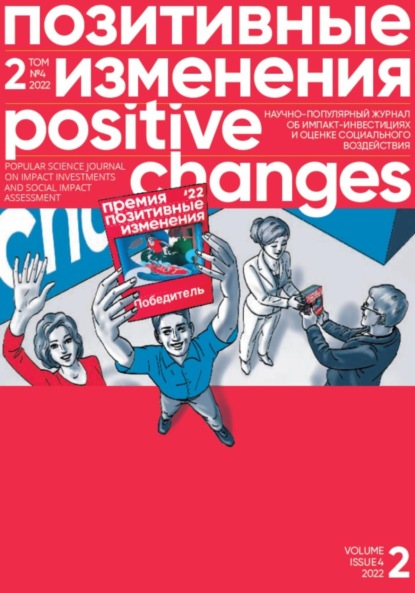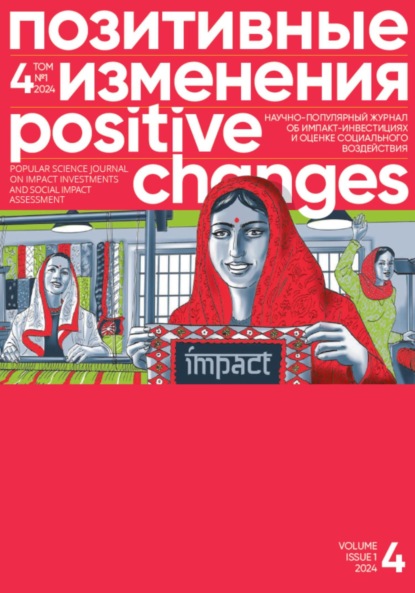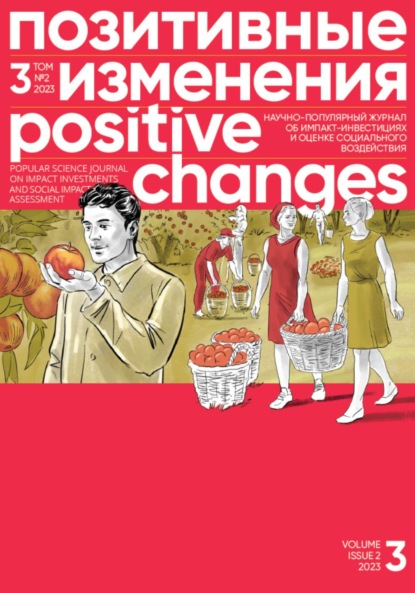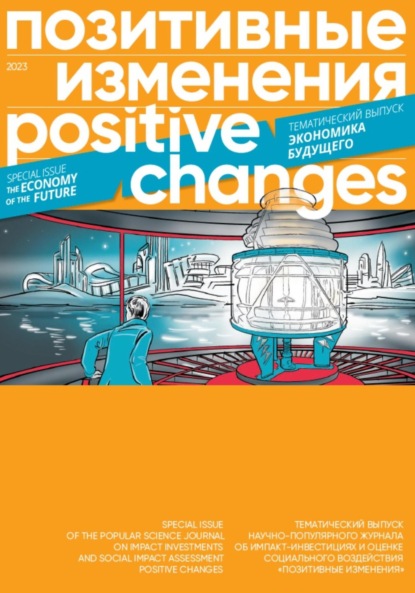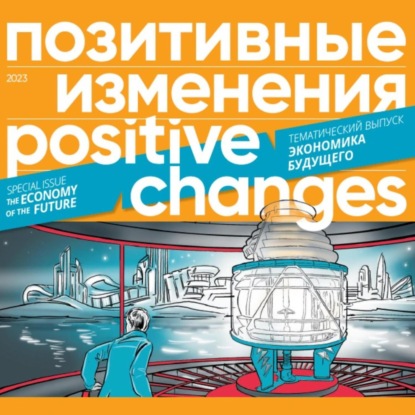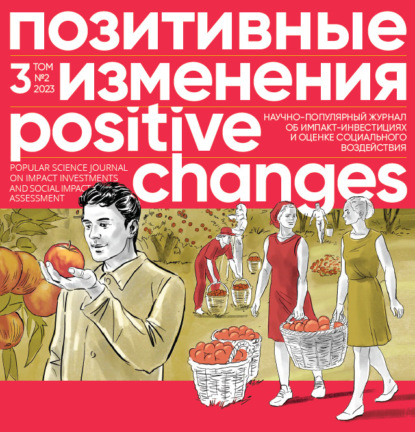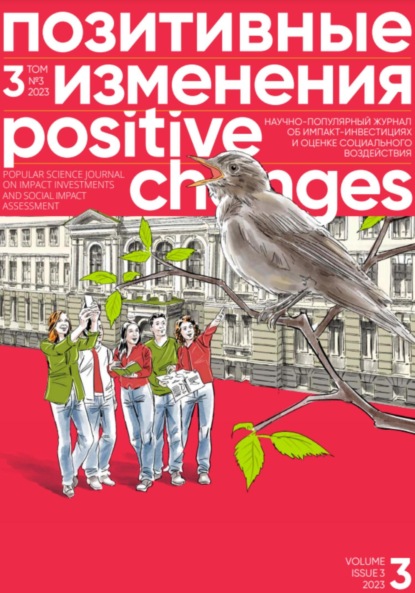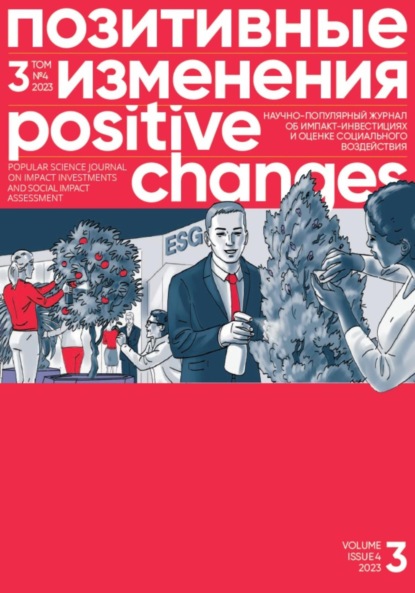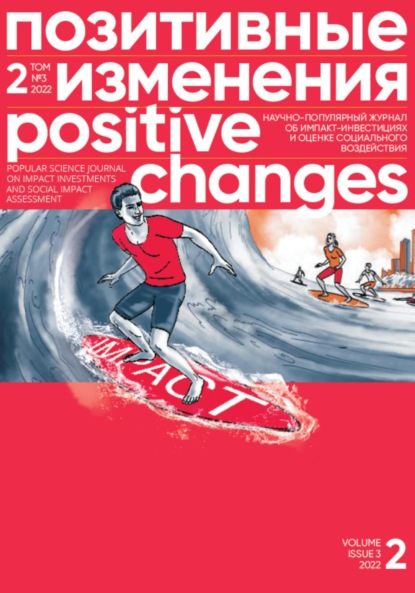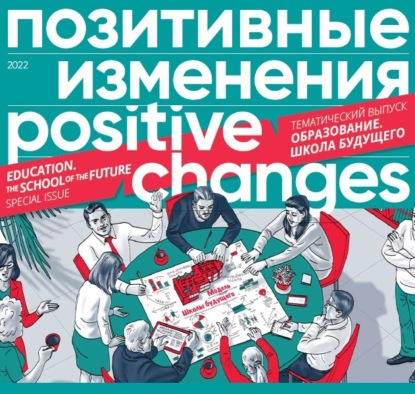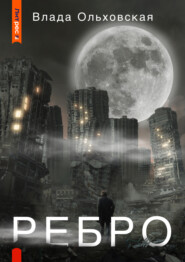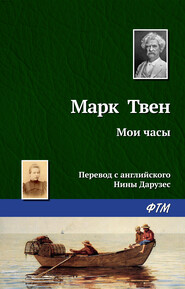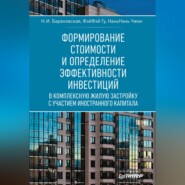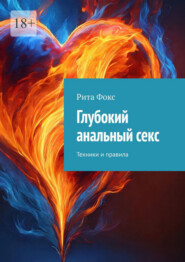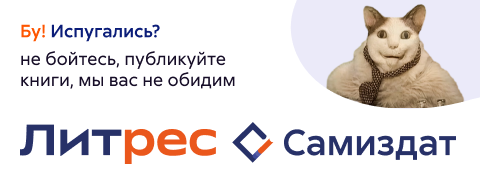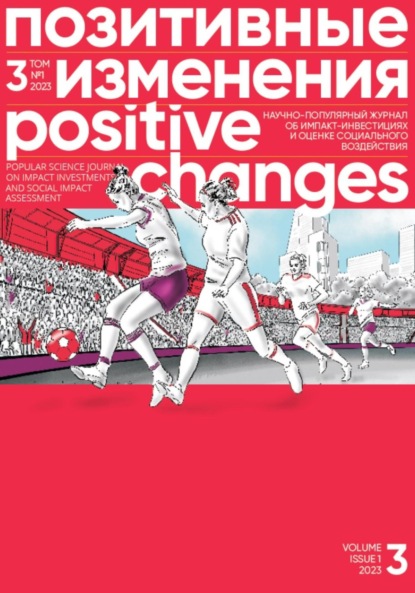 ТекстПолная версия
ТекстПолная версия Позитивные изменения, Том 3 №1, 2023. Positive changes. Volume 3, Issue 1 (2023)
Полная версия
- О книге
- Читать
Теперь мы перешли к попыткам изменить целые системы (климатические, сельскохозяйственные, продовольственные, здравоохранения). Когда вы начинаете изменять систему, вы выходите за рамки одного конкретного проекта.
Теория изменений рассматривает индивидуальный проект или программу, а теория трансформации, пытающаяся изменять системы, должна состоять из множества различных теорий изменений. Например, в кампании по борьбе с курением не одна теория изменений. Вам нужно просвещать людей о вреде курения, работать с рекламой и маркетингом, со здравоохранением. Вам нужны нормативно-правовые акты и стимулирующие меры, активная работа с производителями табачной продукции, с молодежью, с пожилыми людьми.
Существует много разных подходов к борьбе с курением, каждый из которых имеет собственную теорию изменений, а теория трансформации пытается интегрировать все эти разные теории изменений, чтобы добиться общего системного воздействия.
Мне кажется, это касается и концепции Blue Marble[4], над которой вы сейчас работаете. Не могли бы вы кратко описать основные идеи этой концепции?
Оценка Blue Marble связана с теорией трансформации: как только мы начинаем иметь дело с крупными системами, мы имеем дело с глобальными воздействиями. Например, на состояние сельского хозяйства в любой стране влияют изменение климата, мировые рынки, политика правительства, политика международных агентств, торговля, транспорт. Идея оценки Blue Marble заключается в том, что мы должны понимать не только то, что происходит в конкретной локальной программе, но и как на эту программу влияют глобальные и международные тенденции, например, пандемия или изменения климата.
Концепция оценки Blue Marble соединяет локальное с глобальным. В английском для этого есть слово «glocal», сочетающее слова «local» и «global», «локальный» и «глобальный». Оно означает поиск взаимодействий и взаимосвязей локального и глобального, таким образом наше понимание на глобальном уровне основано на понимании локальных процессов, а понимание происходящего на локальном уровне обусловлено пониманием глобальных тенденций.
Давайте поговорим о реализации этой концепции в практической работе оценщиков. Например, если оценщик решает использовать концепцию оценки Blue Marble в своей работе, с чего ему надо начинать?
Давайте в качестве примера снова возьмем инвестирование в социальные проекты. Для любой инвестиции в социальный проект важно рассмотреть конкретный проект, в который будут вкладываться средства, однако с точки зрения Blue Marble оценщики также должны знать, чем занимаются другие инвесторы социальных проектов. Что происходит в других странах? Каковы мировые тенденции в инвестировании в социальные проекты? Какие сети задействованы? Чем больше денег поступает в социальные проекты на глобальном уровне, тем важнее применять к каждому конкретному проекту глобальные тенденции и шаблоны.
Работа оценщика в этом случае включает не только разработку оценки конкретного социального воздействия, но и знание глобального контекста, что происходит в других проектах оценки социального воздействия, чему можно у них научиться, какие там показатели, как это связано с целями устойчивого развития. Например, связана ли конкретная инвестиция в социальный проект с одной целью устойчивого развития или несколькими целями устойчивого развития? Конкретно это означает, что оценщику необходимо научиться помещать отдельный проект в широкий глобальный контекст.
Есть ли у вас руководство или список вопросов, которые специалист по оценке должен задать? Например, чтобы не забыть про климат и другие глобальные вопросы.
Да, такой список вопросов есть. Как вы предположили, первая часть вопросов относится к климату – как проект соотносится с устойчивым развитием, восстановлением, смягчением последствий изменения климата? Потому что мы находимся в чрезвычайной климатической ситуации, и любые наши действия могут оказать на нее влияние.
Еще одна группа вопросов касается социальной справедливости, потому что разрыв между богатыми и бедными людьми, между более богатыми и более бедными странами не прекращает увеличиваться. Есть этический критерий – как конкретный проект поддерживает гендерное и социально-экономическое равенство, расовую справедливость. Таким образом, вопросы социальной справедливости и равенства и вопросы воздействия на изменение климата стали универсальными, они должны учитываться во всех оценках программ.
Мой последний вопрос – о будущем. Если попытаться заглянуть в ближайшее будущее оценки программ, какие изменения мы можем ожидать?
Я думаю, будет больше сетей оценщиков, обменивающихся данными и коммуницирующих друг с другом, потому что мы занимаемся системными изменениями. Например, я работаю с Глобальным альянсом за будущее продовольствия, это 30 благотворительных фондов на 4 континентах. Это фонды из Северной Америки, Европы, Южной Америки и Азии.
Для решения глобальных проблем и отслеживания системных изменений требуется совместная работа команды оценщиков из разных стран, говорящих на разных языках и имеющих разные методологические навыки. В прошлом году я с командой оценщиков Blue Marble участвовал в оценке Саммита ООН по продовольственным системам.
Сейчас я работаю с новой академией международной оценки, и у нас есть участники из всех стран мира, я вхожу в российское общество оценщиков и оказываю содействие Международной организации по сотрудничеству и оценке. Международные и глобальные сети и группы оценщиков станут частью нашего будущего.
“If You Use Evaluation You Make Better Decisions and Help People More.” Interview with Michael Patton
Natalia Gladkikh
DOI 10.55140/2782–5817–2023–3–1–4–15

Michael Quinn Patton is one of the world’s most renowned experts in project and program evaluation[5]. He has been working in this field since the 1970s, when evaluation in the nonprofit sector was a relatively new phenomenon. Dr. Patton is the creator of well-known evaluation concepts that are used by specialists around the world. He received several international awards for outstanding contributions to the field, and he wrote 18 books on various issues related to practical use of evaluation[6]. In an interview with our Editor-in-Chief, Michael Patton shared his views on the profession of an evaluator[7], the impact of the profession, trends in evaluation, the “gold standard” of evaluation methodology, and what the future holds for this field.

Michael Patton

Natalia Gladkikh
PhD in Psychology, Leading Expert Institute of Social and Economic Design at the Higher School of Economics
What are the most significant changes in project and program evaluation over your long professional journey?
I’ve been in evaluation for over 50 years. The field has grown very diverse in this time period. Just as there are many programs, there are many types of evaluation. And the most difficult task is to coordinate them with each other.
Has the perception of the profession of project and program evaluator changed during this time?
I hope that this area has become more professional in the public perception, because there are now more than 100 national organizations, such as the Association of Specialists in Program and Policy Evaluation in Russia, the European Association of Evaluators, etc. They have established standards, training programs, publications. According to our data, there are now about 75,000 program evaluators worldwide. Of course, all these facts suggest that the field is getting more professional.
Have the requirements to evaluators changed over time? What are the requirements to professional evaluators today?
Most countries do not certify evaluators. Canada has a certification program through the Canadian Evaluation Society. There are a number of certification programs in New Zealand and Japan.
The American Evaluation Association has no formal certification program. It is up to those who hire evaluators to verify their qualifications and determine if the evaluator has the necessary skills.
If we take Canada as an example, does this country have a higher education program (such as a master’s degree), or is it a certification program run by a professional association? What is the process for obtaining a certificate?
The Canadian Evaluation Society organizes trainings. People attend the trainings, complete the curriculum, and present examples of past evaluation work. By acquiring certification from the Canadian Evaluation Society, they become certified evaluators.
There is no “gold standard” for evaluation. The main challenge is adaptability, appropriateness, also the program needs are the key.
In your opinion, when a customer decides whether a particular evaluator is the best person for their particular project, which option is better – certification or no certification?
I think having a certificate helps, because it allows customers, who may not be very proficient in evaluation, to understand they are dealing with someone who has been trained. But the field of evaluation in the United States and in Europe is so diverse that it has not been possible so far to achieve a common understanding of the basics of this profession. In Canada, we were able to agree on the basic concepts that an evaluator must be familiar with, that is why certification is possible there. It is unlikely to happen in the U. S. because the field is too diverse there.
Let’s talk about evaluation methodology. Have there been any changes in this area?
Of course. Artificial intelligence (AI), big data and its sources have emerged. The pandemic brought forth great changes: online services have enabled conducting interviews and focus groups remotely. Satellite imagery has been used in new ways.
For example, thanks to satellites, it is no longer necessary to go somewhere in the field to check whether new agricultural equipment is being used there. If we want to know how many children attend a school in a developing country, we can use satellite imagery again.
Remote data collection, AI, big data, the Internet, and new data visualization techniques allow for better communication. It has become easier to distribute evaluation results thanks to the development of the Internet and social media, to find people to interview, to follow a person on social networks. All of these technological advances are making their way into the field of evaluation.
So many changes and so many possibilities. Does every evaluator need to be familiar with all these new products? What are the most important qualities and requirements for a good evaluator, and can we talk about the “gold standard” of an evaluator?
The way I see it, we have defined the “gold standard” as the ability to evaluate a program in the proper way, which meets the needs of that specific program. Methodologically, there is no “gold standard.” In any case, I do not believe that randomized controlled trials are better than other methodologies, because the program needs are the key, and because such phenomena as the pandemic, climate change, global political instability, growing numbers of refugees, famine and drought, the speed of change in the world around us, create the need for evaluation approaches that can adapt quickly to new conditions, similar to those caused by the pandemic.
Programs need to change, and so does evaluation. There is no single method that would represent the “gold standard.” The main challenge and difficulty is adaptability and appropriateness. You need to understand what a particular program needs at a particular point in time.
If an evaluation involves, for example, the use of advanced sociological tools, which I am not familiar with as an evaluator, I would not be able to conduct an evaluation at the proper level, would I?
Absolutely. This is partly why it is so important to have professional associations. Today, thanks to them, to social media, to networking, you can always find someone to help you learn these methods. Many evaluations these days are done collectively, so no single evaluator would have all the necessary techniques and skills. However, if you can find the right people through an association, the Internet, or social media, you can find evaluators with all those skills.
Would you say that most clients today require the use of advanced sociological analysis methods?
They need to be able to get feedback from the beneficiaries, if that’s what you mean by sociological analysis. Programs should have good opportunities to get high-quality, real-world data from program participants, so they can find out what is really going on. Perhaps the most important and most common thing is that evaluators get direct, independent and real feedback from the target audiences involved in the program – how well the program is working, whether they are getting the help they need, and what can be improved.
You need to be a good interviewer, to know how to do surveys, use social networks, and get data directly from people.
You are a professional sociologist. In your experience, is it common for evaluators to have a background in sociology or psychology, a professional mastery of SPSS and similar programs, or is it really not necessary?
Fortunately, there is additional training available. Much of my sociological education was strictly academic, and I had to learn evaluation by doing. When I started, there were no courses, no seminars. I had to take interviews and surveys as sociological methods and adapt them to evaluation. Psychologists had to do the same with tests, and economists with cost-benefit analysis. Working in evaluation requires the ability to adapt these academic research methodologies. This is a key skill.
Today evaluation is not only about techniques, but also about interpersonal relationships. Evaluators must be good listeners, able to work with people from different cultures, be able to make connections, communicate well, solve problems and manage conflicts.
Let’s talk about the so-called “soft skills.” Are they really important to the evaluator?
That’s a good question. The American Evaluation Association has established a set of competencies that are essential to an evaluator. Of course, these include methodological competence, project management, knowledge of professional and ethical standards.
And then there are interpersonal competencies. Evaluators must be good listeners, able to work with people from different cultures. They must treat people with respect. Be able to make connections, communicate well, solve problems and manage conflicts.
One of my recent books focuses on the relevant skills for working with stakeholders at various levels. This is an important change, as evaluation today is not only about techniques, but also about interpersonal relationships.
In some of your publications, you mentioned the concept of evaluative thinking and suggested sharing this type of thinking with the project team, with the client. Doesn’t this threaten the existence of the evaluators as a profession? Wouldn’t evaluation become just a management function?
I don’t consider this a danger. You described the situation very well, but evaluative thinking in management only means that you have better communication because you speak the same language. People understand the concepts of logical frameworks, theories of change, SMART goals, different types of evaluation for different purposes, but in order to do the actual evaluation, you still need a fresh perspective, you still need people who can look at things differently.
When people do have an evaluative mindset, they begin to appreciate having a specialist who helps them look at things through the eyes of an outsider. It is something I do often. As an evaluator, I help managers, employees and even shareholders understand how evaluators think, how they define criteria and interpret data, how they draw conclusions – but they would still need an evaluator to make their job easier, to have another pair of eyes to look at things from a different perspective. Helping to think in an evaluative way is about improving communication and understanding of what’s going on.
So you don’t think that evaluation will become just a part of management, because the evaluator has other functions besides allowing you to understand what’s really going on.
Yes, that’s right. Evaluators also give an additional point of view. Even where there are internal evaluators in the management, their job is to do the evaluation and make sure there’s good data and make sure people take the time to interpret it. I believe the evaluator function will remain, but the better management understands evaluation, the better communication and use of evaluation results will be.
In your 2009 article, “The Future of Program Evaluation,” you wrote that the “gold standard” of evaluation methodologies would be hotly debated over the next few decades. Can we say that the answer to this question has changed significantly since then? Or do we still have the same leader – randomized controlled trials?
The debate continues, but it’s becoming increasingly clear that in a rapidly changing world, we need fast-turnaround techniques that produce real data in real time. Randomized controlled trials are really not very useful in a complex, dynamic, rapidly changing world. They work best in a stable situation where there are clear fixed interventions.
In a rapidly changing world, we need fast-turnaround techniques that produce real data in real time and provide them just as quickly to people.
If you have to work on topics like pandemics, climate change, or civil unrest when things are changing rapidly, randomized controlled trials are not appropriate – they are too rigid and too time-consuming.
The speed of change means that the evaluation must produce results quickly, in real time, and provide them just as quickly to people who need to make decisions in a time-constrained environment.
The evaluator’s profession is changing in response to what is going on, but evaluators themselves are also changing the world. What do you think this profession has already given to the world?
I think we are living in a time of a worldwide battle between approaches based on evidence, facts, and science, on the one hand, and a part of the world that ignores them and only seeks to promote ideology. Evaluation is part of this worldwide data. Evaluation proves that if you use data, you make better decisions and help people more.
We’ve seen it work with people who refused COVID vaccination, who don’t believe the pandemic and vaccination data. In the so-called post-truth or anti-science world, where people can say whatever they believe and assume it to be true, evaluators help people appreciate the importance of evidence, looking at reality and working with it rather than with subjective perceptions and beliefs. This is our contribution.
In the so-called post-truth or anti-science world evaluators help people appreciate the importance of evidence, looking at reality and working with it.
You are the author of many program evaluation concepts used by evaluators around the world. We would like to discuss some of them. The first question concerns the concept of utilization-focused evaluation. In it, you emphasize the client’s role and interest, their desire to participate in the use of the evaluation results. Nowadays, investors in social projects and even the state (as in the social impact bond model, SIB), often become the evaluators’ clients. They are not involved in the project itself, but are its customers. Is it possible to use the evaluation principle with an emphasis on its use in this specific situation? Are there any peculiarities of its application in this case?
This is an important question. Utilization-focused evaluation requires considering different levels and different types of stakeholders – we call them intended users. Who is this evaluation for? If the intended users are social investors, then I would want to engage them in defining the criteria they are seeking. What do they want to know to make a better investment?
When I work with social investors, part of what I do is help them understand as clients that there are different ways to do evaluation, because there are many different types of programs. For example, when I work with boards of directors investing in social projects or charitable foundations, I do an exercise with them. I make a list of different types of financial instruments: blue chip stocks, high growth stocks, undervalued stocks, that is, stocks of companies in transition or struggling, long-term bonds, short-term bonds, mutual funds. These people are well aware of the different types of financial instruments and the differences in their profitability. Then I take a set of projects and draw parallels between different kinds of projects and different kinds of financial instruments.
Blue chips are well known programs like the World Food Program or UNICEF; they are world-famous, stable, and have a good reputation. A program that seeks to scale, to enter other territories within or outside the country is the equivalent of high-growing stock in the financial market.
Undervalued stock is a program that is in transition and needs help to get through and adapt to change. Long-term bonds are the equivalent of operating support for a program without specifying what specific project the program will implement.
This exercise helps social investors understand that they value different financial instruments differently. They look at different types of stocks, investment funds or bonds using different criteria, and we also evaluate different programs using different criteria depending on the nature of the program and the nature of the investment. Using the logic of evaluating financial instruments helps them understand the logic of evaluating programs.
The theory of transformation, trying to change systems, must consist of many different theories of change. The Blue Marble evaluation is related to the theory of transformation: once we start dealing with large systems, we are dealing with global impacts.
Investors in social projects also have internal networks and have developed a number of methodological approaches. For example, they are very fond of the social return on investment (SROI) method. Sometimes it is even taken as the only possible, no-alternative method for evaluating the results of any project. This seems to go at odds with the evaluation specialists’ views – again, based on the utilization-focused evaluation concept.
The social effectiveness of investments still needs to be interpreted and adapted, depending on whether we are talking about long-term or short-term social effectiveness of investments, about innovative high-risk programs, high-risk programs with high performance potential, or low-risk, low-return programs. When I talk about parallels between different kinds of financial instruments and different kinds of programs, I’m talking about how much risk social project investors are willing to take, how innovative they want to be, what the time span is for investment and return, whether they are looking for several different indicators or just one measure of success.
There is a lot to negotiate and a lot to adapt, even with the general criteria of investing in social projects. It is also necessary to determine what it means to invest in social projects and the effectiveness of such investments in a particular situation. And this is where utilization-focused evaluation is needed, because it provides a dialogue with clients and helps them articulate the timing, the criteria, the degree of risk they are willing to accept, and the required level of return on investment.
Using the logic of evaluating financial instruments helps social investors understand the logic of evaluating programs.
The next question concerns the theory of transformation. What is the difference between your proposed term “theory of transformation” and theory of change?



